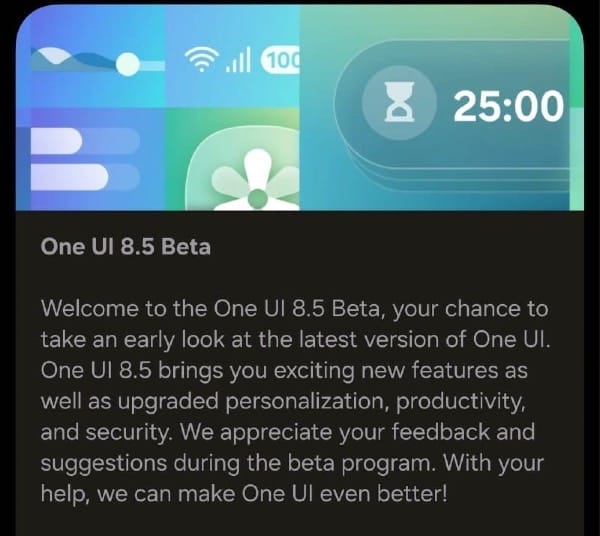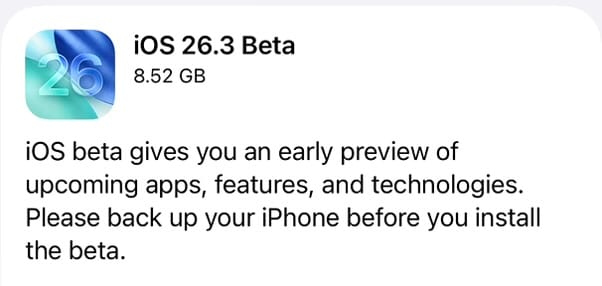When Apple unveiled the M1 chip in November 2020, it wasn't just a product launch—it was a vindication. After years of speculation about whether Apple could really replace Intel processors in their Mac lineup, the answer arrived with thunderous clarity: not only could they do it, they could do it better than anyone thought possible.
The M1 wasn't incrementally faster. It was transformationally different. A MacBook Air with no fan outperformed a Mac Pro in some workflows. Battery life jumped from "good enough" to "forget your charger for two days" territory. Apps launched instantly. Video exports that used to make Intel chips scream in thermal agony now happened in cool, whispered efficiency.
It was, by every measure, one of the greatest chip success stories in computing history.
And now, four years and four chip generations later, that success has become Apple's most elegant trap.
The Revolution That Worked Too Well
Let's be clear about something: the M1 was a genuine revolution. Apple didn't just create a good ARM-based processor for laptops—they fundamentally redefined what personal computing performance could look like. The integration of CPU, GPU, Neural Engine, and unified memory on a single chip wasn't just clever engineering; it was a complete reimagining of the architecture.
The performance gains were staggering. Single-core performance that matched or exceeded Intel's best chips. Graphics that embarrassed integrated GPUs and competed with discrete options. All while sipping power like a smartphone processor.
But here's where the trap begins to close: Apple made these chips too good.
That base M1 MacBook Air from 2020? It still absolutely flies. Web browsing, document editing, photo management, 4K video editing, coding—the workflows that 90% of users perform daily—all work flawlessly. Not "adequately" or "acceptably." Flawlessly.
And that creates a problem when your business model depends on people upgrading every few years.
The Plateau Nobody Talks About
The tech press dutifully reports on each new M-series chip with breathless excitement. The M2 brought 18% faster CPU performance! The M3 introduced ray tracing! The M4 features a Neural Engine 60% faster than M1! And now we have M5 with Neural Accelerators in every GPU core!
Impressive. Genuinely impressive engineering.
But ask yourself: when was the last time you met someone who upgraded their Mac specifically because the new chip was faster?
The performance curve that mattered—the one users actually experience—plateaued somewhere around M1 for most people. Sure, video editors rendering 8K footage might notice the difference between M1 and M4. Developers compiling massive codebases might appreciate the extra cores. Machine learning researchers pushing the Neural Engine to its limits might care about those AI improvements.
But the college student writing papers? The business professional in endless Zoom calls? The creative professional managing a small YouTube channel? Their M1 does everything they need, and they'll likely never push it hard enough to notice the difference.
This is the paradox: Apple created a chip so capable that it essentially solved the performance problem for the vast majority of users. And in doing so, they eliminated the primary reason people used to upgrade their computers.
The Upgrade Cycle Trap
Apple's business model has always relied on a predictable upgrade cycle. Release new hardware annually. Make it incrementally better. Create marketing that emphasizes the improvements. Watch the upgrade revenue flow in.
This worked beautifully when computers genuinely got meaningfully faster each year. When your 2015 MacBook Air struggled with 4K video and took forever to open Photoshop, the 2018 model's performance improvements mattered. You could feel the difference. The upgrade was justified.
But the M-series chips broke this cycle by being too good, too fast.
Intel's final years gave Apple struggling thermal performance, inconsistent battery life, and genuine performance constraints that users bumped into regularly. Those were problems that upgrades solved. The M1 solved all of those problems at once—and then Apple kept solving the same solved problems every year after.
Now we're in a strange situation where Apple releases new chips annually because the market expects it, because investors want to see innovation, because staying technologically competitive demands it. But the actual impact on purchasing decisions has diminished dramatically.
The M4 MacBook Pro is objectively faster than the M1 version. But "objectively faster" in benchmarks doesn't translate to "noticeably faster" in real-world use for most people. And if users can't feel the difference, why would they pay for it?
Marketing's Desperate Pivot
Watch how Apple's marketing has evolved. The M1 announcement was all about performance and efficiency—the core experience of using a computer got dramatically better. Those were claims everyone could understand and feel.
By M3 and M4, the marketing shifted. Now it's about ray tracing in games most Mac users don't play. It's about Neural Engine performance for AI tasks that barely exist yet in mainstream apps. It's about ProRes encode performance that matters to a vanishingly small percentage of Mac owners.
The M5 launch went all-in on AI, mentioning it eight times in the first three paragraphs of Apple's press release. Not because the M5 suddenly makes Macs intelligent in ways the M1 didn't—but because "AI" is the only remaining frontier that sounds exciting and future-focused enough to justify an upgrade.
This is what happens when you run out of problems to solve but still need to sell new solutions every year.
The marketing increasingly targets the spec-obsessed enthusiasts and professionals with highly specific workflows, because those are the only people who might actually care about the differences between M4 and M5. Everyone else is perfectly happy with their M1.
The Strategic Bind
Apple can't simply stop releasing new chips. The competitive landscape won't allow it. Qualcomm is pushing ARM chips for Windows. Intel and AMD keep iterating. If Apple went two years without a new processor, the tech press would declare them stagnant, investors would panic, and mindshare would erode.
But each new release has diminishing impact. The M1 to M2 jump mattered to some people. M2 to M3 mattered to fewer. M3 to M4 mattered to even fewer still. And M4 to M5? Outside of specific professional workflows and early AI adopters, it's hard to argue it matters at all to most Mac buyers.
This creates a fascinating strategic bind:
- Apple must continue the annual chip cadence for market perception and competitive reasons
- But these annual releases don't drive upgrades the way they used to
- The chips themselves are so good that users have no compelling reason to replace them
- Yet the entire business model assumes people will upgrade every 3-4 years
The solution Apple seems to have landed on is diversification—not of chips, but of reasons to upgrade. Hence the aggressive push into AI features, the integration of custom wireless chips like N1 and C1X, the addition of new sensors and capabilities beyond raw processing power.
They're trying to find new levers to pull because the performance lever has been maxed out.
What This Means for Consumer Tech
The Apple Silicon situation isn't unique to Apple—it's a preview of what happens across consumer technology when you solve fundamental problems too effectively.
Smartphones hit this wall years ago. The iPhone 12 does essentially everything the iPhone 16 does for most users. The improvements are real but increasingly irrelevant to daily experience. Hence the industry's desperate pivot to foldable screens, AI features, and increasingly niche camera capabilities.
We're seeing the same pattern with chips. The fundamental performance of personal computers has exceeded the needs of mainstream users. We've hit "good enough," and once you're past good enough, incremental improvements don't drive behavior.
This is, in a weird way, a success story. It means computing technology has matured to the point where it genuinely serves user needs rather than constantly demanding upgrades to perform basic tasks. Your tools can just work without constant replacement.
But it's a crisis for companies built on hardware upgrade cycles.
The Irony of Engineering Excellence
Here's the ultimate irony: Apple's chip team achieved exactly what they set out to do. They created processors that are powerful, efficient, and capable. They exceeded their goals so thoroughly that they solved problems users didn't even know they had.
The M1 could have been 20% slower and still been revolutionary. It could have had half the GPU performance and still impressed everyone. It could have managed 10 hours of battery instead of 15 and users would have celebrated.
Instead, Apple's engineers built chips so capable that they eliminated performance anxiety from the purchase equation. They made computers that don't feel slow even years later. They created a product so good that it undermined the upgrade cycle their company depends on.
This is what happens when engineering excellence collides with business model reality. The engineers won—they made something remarkable. But that victory created a strategic challenge that marketing can't solve and that annual refreshes can't overcome.
The Path Forward
So where does Apple go from here?
The short-term answer seems to be AI. Not because the Neural Engine in M5 is fundamentally different from M1—it's not—but because AI represents a new category of computing task that might actually push hardware limits again. If AI features become genuinely useful and genuinely demanding, maybe that creates the performance gap that drives upgrades.
The longer-term answer is probably services and ecosystem lock-in. If the hardware isn't the reason to upgrade, make the ecosystem the reason to stay. Apple Intelligence, continuity features, and integration across devices become more important than raw chip performance.
But the fundamental tension remains: Apple created chips so good that they've broken their own upgrade cycle. The M-series processors are both Apple's greatest engineering achievement and their most elegant strategic trap.
That M1 MacBook Air from 2020 will probably still be running beautifully in 2028. Which is wonderful for users and a testament to Apple's engineering prowess.
It just also happens to be a problem for Apple's business model.
And that's the paradox: sometimes success is its own complication. Sometimes making something too good creates challenges that mediocrity never would have. Apple wanted to prove they could make the best chips in personal computing.
They succeeded. Now they have to figure out what to do about it.












Discussion